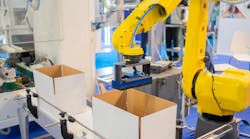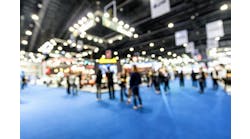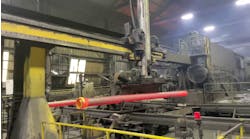With 2024 drawing to a close, my recent trip to Pack Expo International in Chicago was an opportunity for me to take a break away from the office and reconnect with the heartbeat of the industry that has always been a guiding light for my career.
With more than 35 years in this exciting adventure, Pack Expo has become somewhat of a nostalgic trip down memory lane with lots of friends to visit and catch up with. We take advantage of our proximity to Chicago and make the bi-annual event at the McCormick Place as a means to catch up on all that the industry has to offer.
Get your subscription to Control Design’s daily newsletter.
Much like my trips back to Canada to visit the grandchildren, the instant update nature of this particular trade show really accentuates the changes that have happened since the last event. There were a few notable changes in the landscape, and they really highlight trends that are happening in the industry.
As designers, we tend to come upon solutions and then reuse them in future designs but it’s good to step out of the usual scenery, once in a while, and see what others are doing to stay on the leading edge of technology.
Two years ago, there was a big trend toward the use of collaborative robots (cobots). With the world just coming out of the dark cloud of a pandemic, the use of cobots seemed to rescue the industry from the arid climate of a workforce that just didn’t come back.
The event this year had a similar theme of the creative use of cobots, but, more than that, there was a significant increase in the use of robot function in general. Many of the vendors present at the show were replacing traditional functions in their packaging equipment with robotic versions entirely.
One such innovative use of robots was a pair of robots that worked together to perform a down stack and pack function for flexible pouches. The vendor deviated from purchasing a robot to create its own for this function. The result was part of the main control system without needing to integrate a third-party robot platform. Another innovative use of robot function was a case packer where the case/tray forming function was a Cartesian robot, again controlled entirely within the main control system and not using a third-party platform.
The interesting part of both of these examples was that these were integrated into an already mature product line. These were value-added functions that, in both cases, kept the base machine footprint the same as the traditional machine.
The user interaction for the robot functions were just part of the traditional human-machine interface (HMI) screens, eliminating the need for the operator or maintenance/setup person to learn a new operating system and pendant for these operations.
Another trend that was gaining traction two years ago was the use of augmented reality (AR). I have to admit that I was somewhat skeptical about the use of this technology as it felt like it was a gimmick to get video game fans into the mix.
Jump ahead two years, and I think the concept has matured and taken on more of a functional aspect. We have all lamented about the gap that has formed between the technology that we have in industry and the number of people who are capable of supporting the technology when something goes wrong. This is an area where AR has taken a seat at the table.
From my observations, it’s not that the AR technology has improved, although I’m sure it has, but more that the machine builders have two more years of building up the background of media tools that are needed to interact with their machines. The examples that I witnessed at the show were focused on taking the perhaps inexperienced user through the basic troubleshooting steps using documents from the manual, pictures and video, to get to the root cause of an issue.
Some vendors have taken this further and integrated the on-machine tools with a remote support engineer for a real-time troubleshooting experience.
Augmented reality is, perhaps, still the new kid on the block but there are great improvements over the past two years that show great promise for the future. Technology of this nature does, however, have a downside for the end user as it does come at a cost. The trick will be for the machine designer and builder to make a convincing case for the significant cost of investing in this feature on a machine and demonstrate the technology’s value to the folks on the plant floor. Still, this is a fascinating technology, and it will be interesting to see where we are in two more years.





